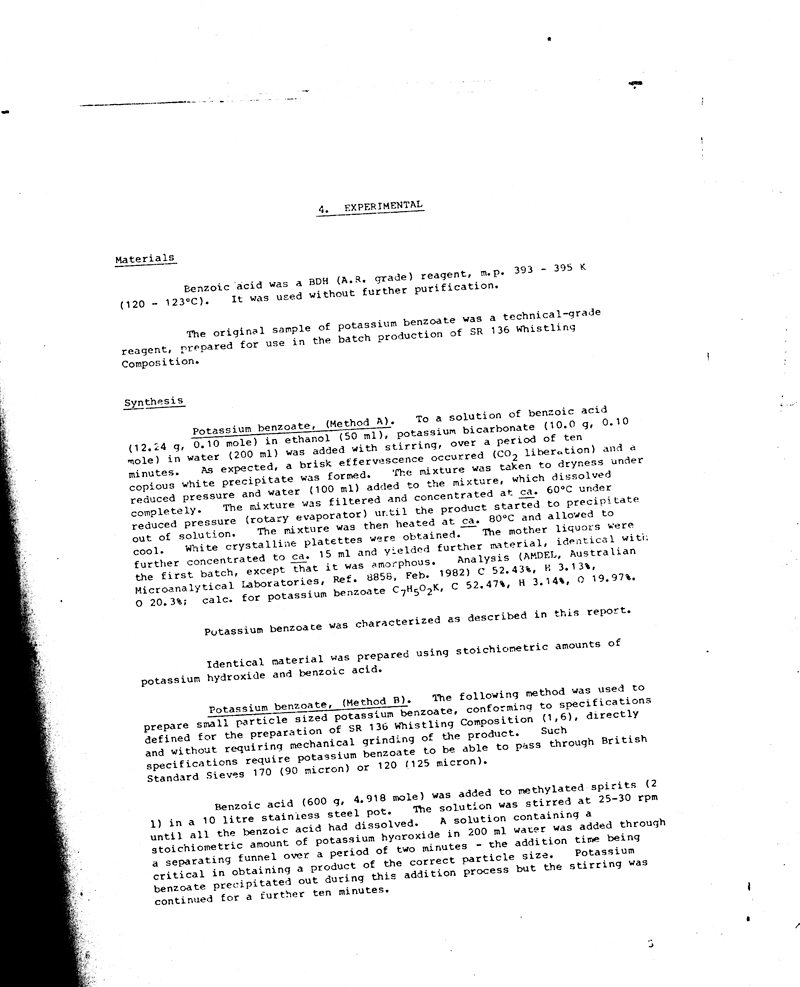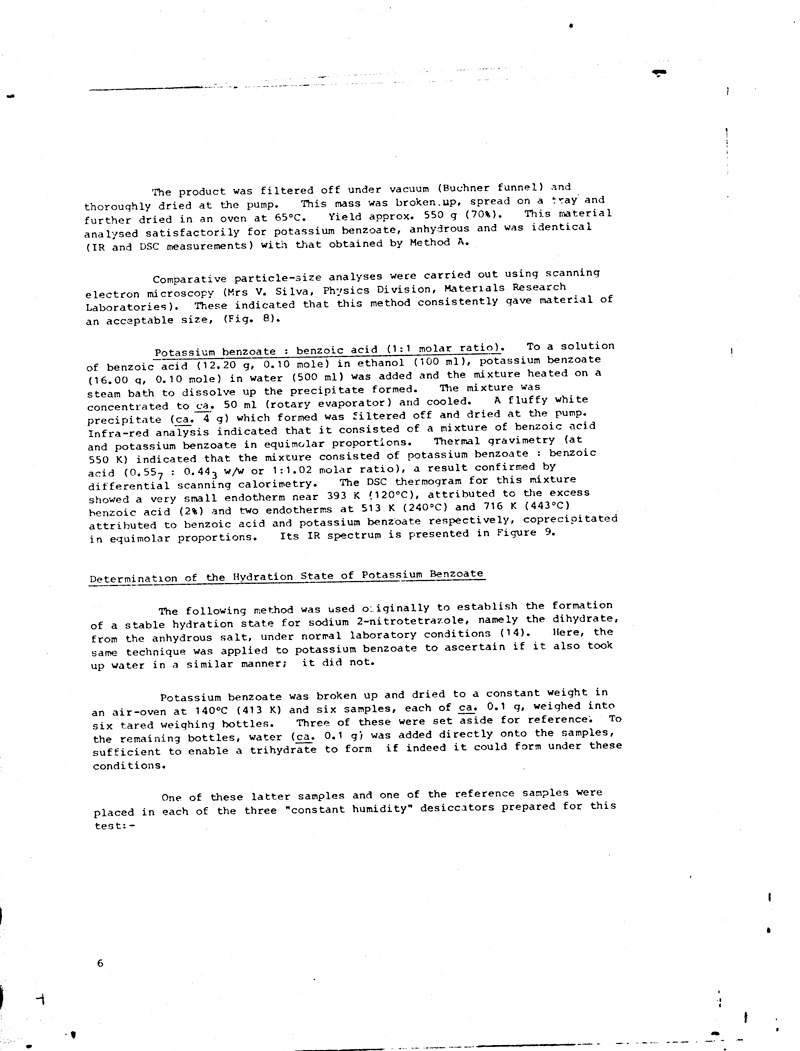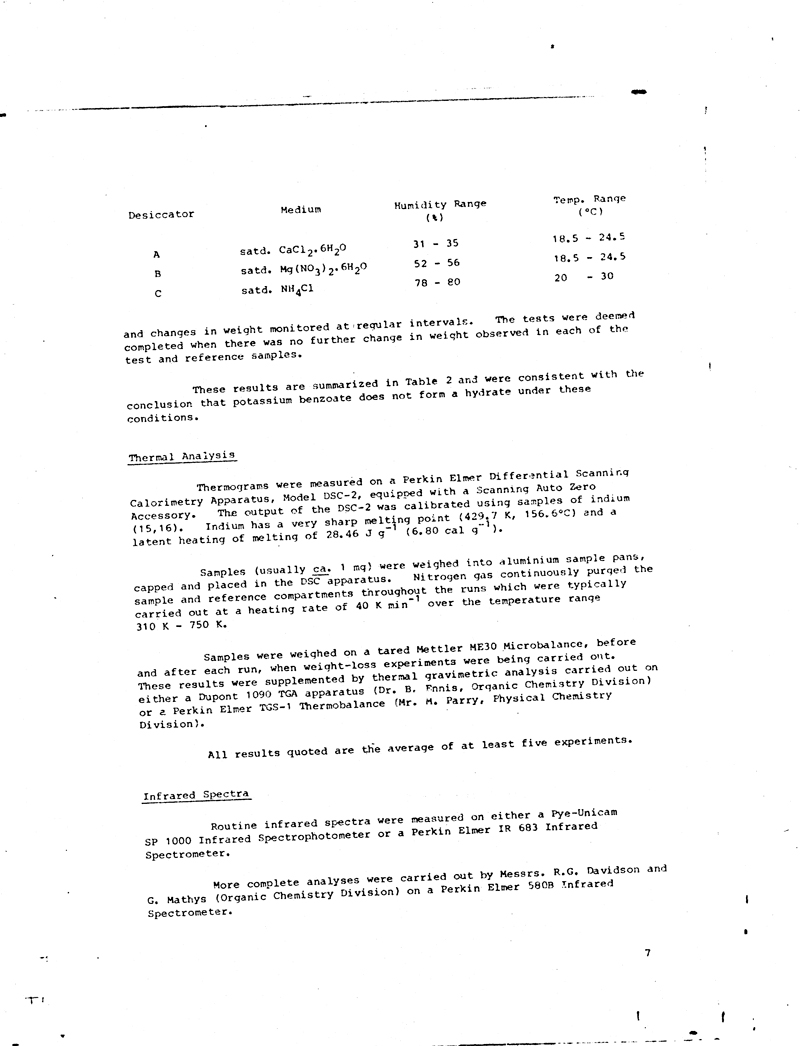| Pages:
1
2
3 |
Methansaeuretier
Harmless

Posts: 45
Registered: 24-5-2010
Location: Europe
Member Is Offline
Mood: strongly alkaline
|
|
I've got these for free and don't know what to do with them (all little amounts 10-100 g):
Silver cyanide
Acridin orange
Salicine
Indol-(3)-butyric acid
Nitroprussid-Sodium
Natural Yellow 18
Indigo carmine
L-Adrenaline
Basic Blue 12
Fuchsine
Rhodamine B
Malachite green
Orange G
4-Nitroaniline
Congo red
Aniline blue
Tryptan blue
|
|
|
The WiZard is In
International Hazard
    
Posts: 1617
Registered: 3-4-2010
Member Is Offline
Mood: No Mood
|
|
Quote: Originally posted by DeAdFX  | | Para-amino benzoic acid... Besides its commerical use as a sunscreen/nutrient could this be used as a subsitute for benzoic acid in whistling
rockets? |
You could use it to preserve your cherries or other fruits.
This from the antipodes, —
Accession Number:
ADA131026
Full Text (pdf) Availability:
Size: 0 KB
Handle / proxy Url: No Full Text PDF Available
Potassium Benzoate for Pyrotechnic Whistling Compositions: Its Synthesis and Characterization as an Anhydrous Salt,
Corporate Author:
MATERIALS RESEARCH LABS ASCOT VALE (AUSTRALIA)
Personal Author(s):
Whelan, D J
Elischer, P P
Report Date:
Feb 1983
Media Count:
29 Pages(s)
Report Number(s):
MRL-R-871 (MRLR871)
Identifiers:
Whistling compounds
Abstract:
Potassium benzoate is one of the ingredients in the formulation SR 136 Whistling Composition. However, some ambiguity exists in the chemical
literature as to its hydration state. In this investigation, it was established that potassium benzoate crystallizes from water as colourless plates
containing no water of crystallization and it does not appear to take up water from its environment. Its DSC thermogram, over the temperature range
310 K - 750 K, consists of a single, sharp and symmetrical endotherm, occurring near 714 K and probably due to melting, the heat of this reaction
being ca 213 J/gram (50.9 cal/gram). It can be prepared from stoichiometric amounts of benzoic acid and either potassium hydroxide or potassium
bicarbonate.
Distribution Limitation(s):
01 - APPROVED FOR PUBLIC RELEASE
Drying it is going to take a bit of creative chemical engineering.



djh
----
IN ENGLAND NOW
DESPITE a lack of corroborative evidence, summer must have arrived,
because the chap up the road has set up his barbecue in the back garden. The
sight of this fearsome apparatus always reminds me of my introduction, many
years ago, to the name basic ritual of the Australian chop picnic.
The principle is simple: you take an ample supply of raw red meat, drive to a
spot where the bull ants and the tiger snakes are not too thick on the ground,
build a fireplace with the neighbourhood stones and collect a pie of dry gum
leaves and sticks. If you are a dedicated Aussie, you then light the fire by
rubbing two sticks together; if not, you use a match. The meat is placed over the
flames on a rickety, platform made of folded chicken wire and converted into
gritty carbon, which you hold in your hand and tear to pieces with your teeth,
manifesting every sign of enjoyment, Meanwhile a billy with a wire handle,
usually an old tin that once held kerosene or weedkiller, has been filled with
stagnant water from the creek and is now boiling. A handful or two of tea is
thrown into it at a precise moment determined by divination, a green gum leaf is
added to the potion as propitiatory magic, and the whole is then whirled around
to distribute the various solids, which by this time include a few bush flies, ants,
and perhaps a small lizard. The resulting stiff brown suspension is then drunk,
again with every expression of delight.
At first, I was in no position to protest. But after I got married and my wife, who
was a strong supporter of this ceremonial meal, began to inflict it on me, I
suggested that I might be provided with a small bacon-and-egg pie to eat while I
had the pleasure of watching other people appreciate their charred chops. I also
put in a plea for beer or lemonade in place of the curious bitter brown syrup, and
I was, rather pityingly, indulged in these whims.
But at least the Australian routine has one great advantage over the effete
British one, where paper plates and even knives and forks may be provided. The
ambient air is usually warm or hot, whereas attendance at this chap's barbecue
up the road means putting on three or four sweaters and taking along oilskins
and an umbrella.
The Lancet, August 29,1987
|
|
|
Random
International Hazard
    
Posts: 1018
Registered: 7-5-2010
Location: In ur closet
Member Is Offline
Mood: Energetic
|
|
What could I do with metal citrate salts like copper citrate, magnesium and calcium citrates...?
|
|
|
ldanielrosa
Hazard to Others
  
Posts: 124
Registered: 25-4-2007
Member Is Offline
Mood: transparent
|
|
Methansaeuretier, the fuchsine is a nice selective dye that works well with periodic acid to test for glycerol and glycols- also ketones I think...
I only know about it from my interest in biodiesel.
|
|
|
Mildronate
Hazard to Others
  
Posts: 428
Registered: 12-9-2009
Member Is Offline
Mood: Ruido sintetico
|
|
I had similar problem, i had Azur I and Azur II
|
|
|
densest
Hazard to Others
  
Posts: 359
Registered: 1-10-2005
Location: in the lehr
Member Is Offline
Mood: slowly warming to strain point
|
|
Most of the dyes could be used in selective biological stain systems. Fuchsine, malachite green, congo red, and tryptan blue I'm sure of, and the rest
are pretty likely. Congo red, fuchsin in acid, and the blues are commonly used IIRC. The dyes are sometimes used in combinations to color different
types of cells in different ways or to distinguish different parts of cells.
Relating the binding of each dye to the chemical constituents of the cell parts might be interesting.
The dyes are often used in concentrations like 1% a drop at a time, so 100g is a lifetime supply for many people.
[Edited on 16-8-2010 by densest]
|
|
|
| Pages:
1
2
3 |
|